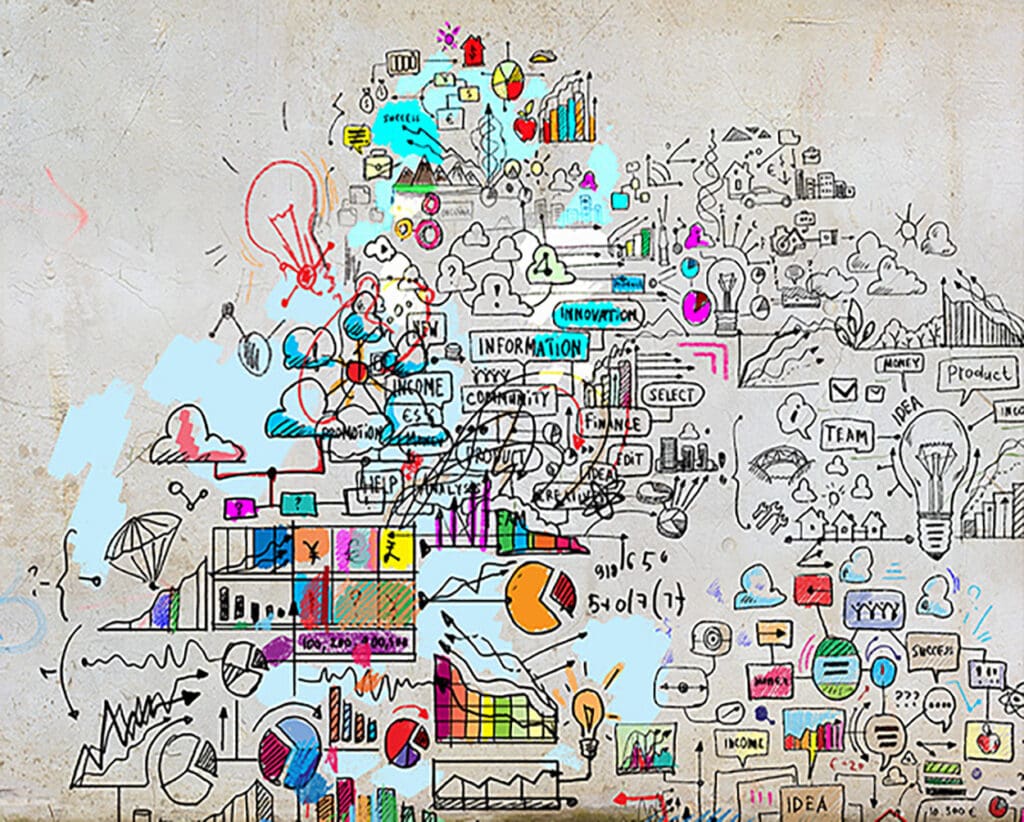What does it take to become an iconic brand?
Most people could name several, if not many, iconic brands. From Fairy to Nike, Kodak to Apple, these brands have built such a strong reputation and influence that they need no introduction, their logos often recognisable with no lettering or context.
But how did these brands make the leap from successful to iconic? For most the journey is a long one, but the likes of Apple and other tech giants have proven that in today’s digital world, a mere decade is enough to become a global household name. Here are three things all iconic brands have in common, and that marketers can apply to boost their own brand’s potential.
Build relevance
One of the secrets of an iconic brand is its longevity, but this can also be its biggest challenge.
How to manoeuvre and stay on top of the fast pace of change in our digital era is a favourite topic of marketing commentators, as each new technological innovation drives new trends, new interests and new potential customers.
In 2015 Business2Community noted that the pace of business has changed, and that ‘technology will continue to grow, accelerate and change business for the foreseeable future.’ US-based consulting firm BCG noted only a few months ago that although consumers are fast shifting to digital, few companies are keeping pace. Unless companies are able to navigate this constantly changing landscape, their chances of longevity will be hampered.
And so how can brands continuously build relevance rather than simply maintain it? Marketing Week recently focused on Häagen-Dazs as a case study, suggesting that ‘Häagen-Dazs is hoping to return to its disruptive roots as it looks to use a combination of product innovation, marketing and events to rebuild brand relevance and boost sales.’
One insight that can be taken from Häagen-Dazs’ approach is the value of fostering high profile brand partnerships when building relevance. As the official ice-cream supplier of Wimbledon for the second year running, which of course is a British and international institution in its own right, Häagen-Dazs hopes to propel itself back into the limelight and create positive brand associations for the future.
Wondering how to keep your brand relevant? Check out our tips.
Image is everything
Although images have always been a central focus of marketing, especially in the age of glossy magazine spreads and towering OOH, today’s digital landscape takes the scope of working with images to a new level.
The Huffington Post recently discussed a staggering statistic about the value of images in a digital age. Quoting MIT Sloan Management Review, the article noted that
‘it is estimated that 3.8 trillion photos were taken in all of human history until mid-2011, but 1 trillion photos were taken in 2015 alone – this is excluding GIFs and video sharing like YouTube, Periscope and Instagram.’
With 60% of digital impressions driven by images and social media posts with visuals receiving 94% more page visits than non-visual content, becoming an iconic brand in 2017 requires that you have the image to match.
Technology is allowing brands to go one step further, for example by using start-up advertising medium Swing. Combining the nostalgia of a Polaroid image with the innovativeness of mobile and augmented reality marketing, moving photos are estimated to drive 5x more engagement than still photos. Shifting the consumer from a state of passivity to activity, which in turn builds positive relationships and consumer interest in a brand, can really set a brand apart from its competitors and begin to move it towards iconic status.
Continue to fulfil a need
One of the biggest drivers of originality and innovation is need, as the well-known saying ‘necessity is the mother of all invention’ suggests. Yet beyond the initial creation of your product and service, ensuring that this need remains nurtured and, importantly, that customers continue to be aware their needs are being fulfilled, is an important element of building an iconic brand.
An interesting example of how an iconic brand filled a gap in the market is Spam. Far from the glamour of modern tech and glossy smartphones, this humble canned meat which generations have loved (or suffered) is still a strong brand with impressive sales figures.
Technology commentators Inverse recently wrote a piece on why Spam has proven to be so long-lasting and successful as an iconic brand, arguing that Spam ‘addressed a real need, and also formed an emotional connection with its consumers.’
Inverse notes that ‘at the time it was introduced, it was the only canned meat product on the market that needed no refrigeration, [giving] Spam a significant competitive advantage.’ Understandable though this need may be when the brand first launched in 1937, this does not answer the question of why, exactly 100 years later, Spam continues to enjoy iconic brand status.
The answer lies in the perceptive realisation that countries both rich and developing will always need cupboard fillers in the form of cheap, long-lasting, reliable products. Spam addresses this need, and through a savvy eye for product development to keep pace with change (for instance “The Spamburger”, “Spam Jalapeño” and even “Spam Spread”) has shown that a true iconic brand can stand the test of time.
Through building relevance, utilising images to nurture your own and continuing to fulfil customer needs, brands can begin to carve out their own space in the playground of icons.
Want to help create an iconic brand for your business? Get in touch. Our branding experts are here to drive business growth and have supported many internationally recognised brands.




